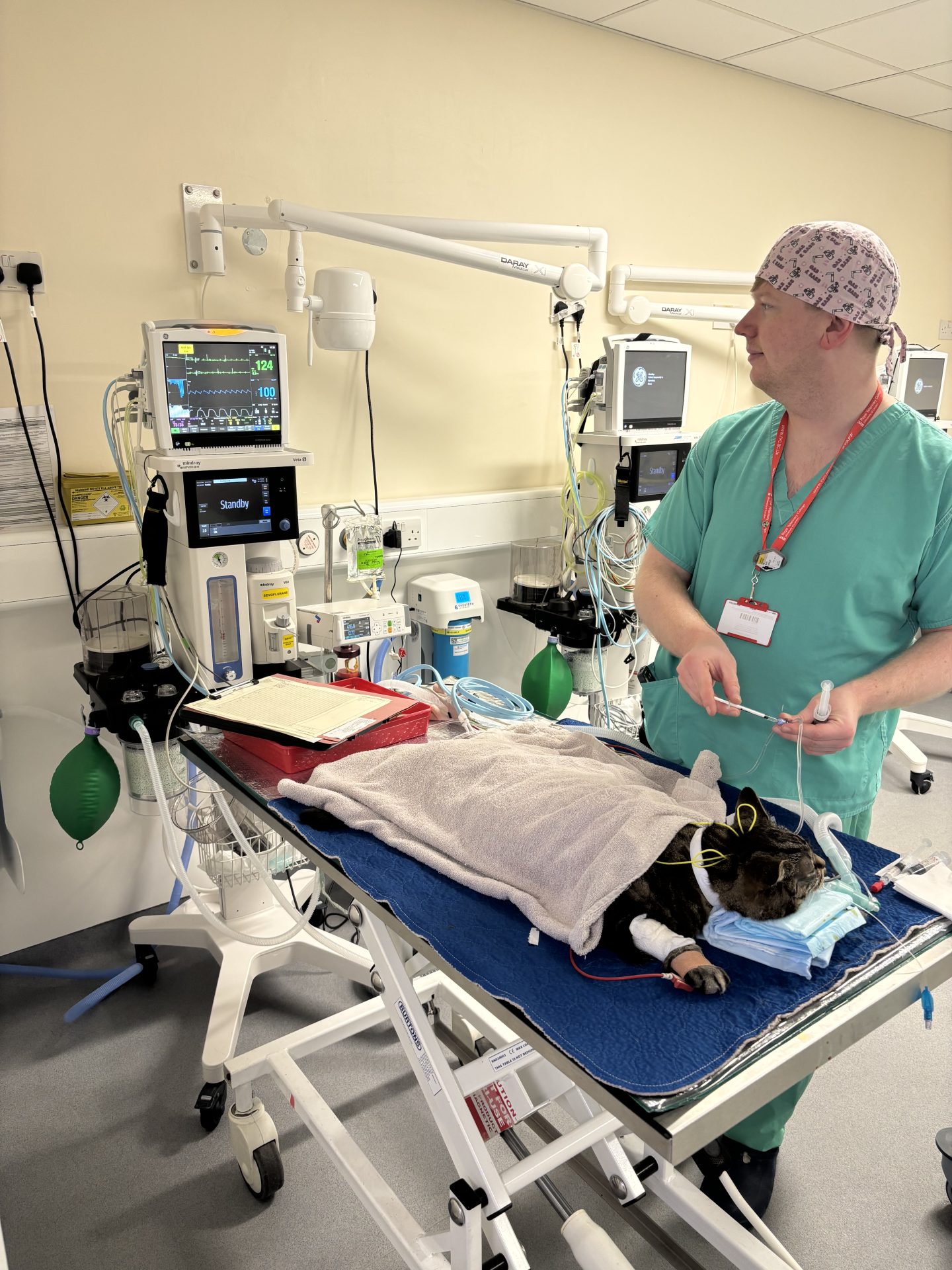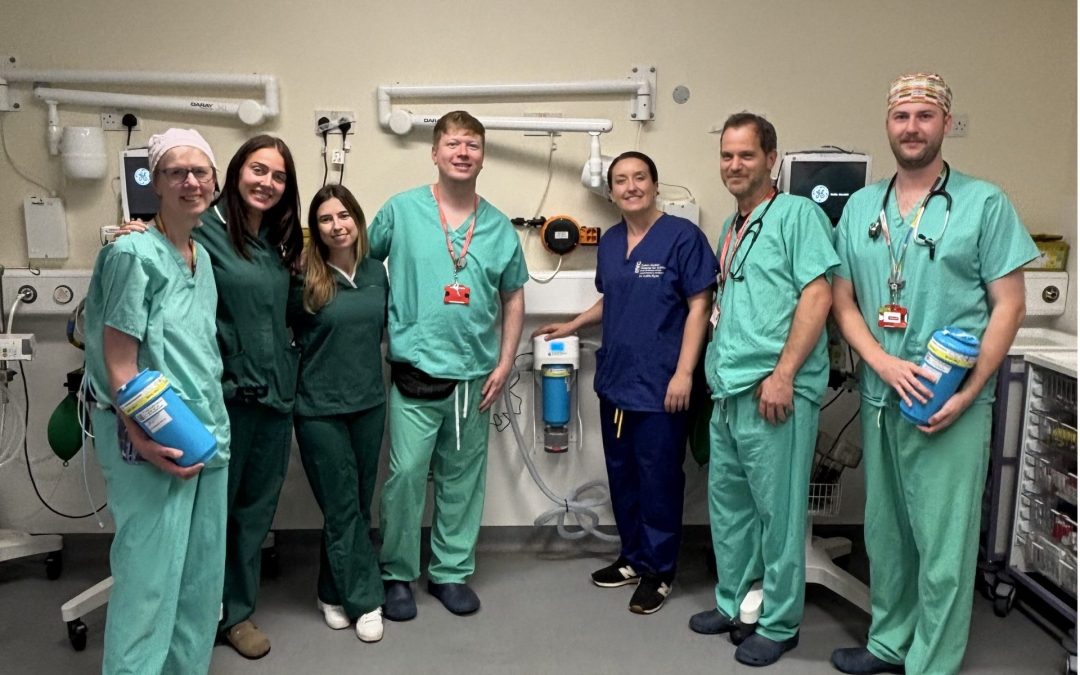The Royal Veterinary College (RVC) has taken a major step toward environmental sustainability by integrating SageTech Veterinary’s advanced waste anaesthetic gas capture technology into its operating theatres and diagnostic areas. This initiative cements the RVC’s position as a leader in sustainable practices within veterinary education and animal healthcare.
The RVC is at the pinnacle of veterinary education and is the first university to adopt SageTech Veterinary’s technology. It’s commitment to demonstrating the importance of sustainability within the veterinary profession highlights the crucial role of educational institutions in promoting environmental responsibility. With SageTech Veterinary’s equipment installed on the RVC’s Hertfordshire campus, future generations of the profession will see first-hand the impact that the capture of waste volatile anaesthetic agents can have on the carbon footprint of their clinical careers.
Anaesthetic gases, such as isoflurane and sevoflurane, are essential in veterinary medicine, but unfortunately are potent greenhouse gases that contribute significantly to global warming. Research indicates that waste anaesthetic gases make up approximately 20% of a veterinary practice’s Scope 1 and Scope 2 emissions.
Recognising these environmental implications, the RVC has adopted SageTech Veterinary’s ‘VET-Dock’ to mitigate emissions. The newly installed systems will capture exhaled waste anaesthetic gases onto reusable canisters. Once full, these canisters are collected, and the captured agents are extracted, then purified and recycled for potential future clinical use. This circular economy approach not only reduces the demand for newly manufactured anaesthetic agents but also conserves raw materials, significantly lowering the carbon footprint of veterinary anaesthesia.
Iain Menneer, CEO of SageTech Veterinary said:
“The Royal Veterinary College is at the forefront of veterinary science and teaching, and once more is leading the way by adopting our waste anaesthetic gas capture solution. The team at SageTech Veterinary is very proud to be working with the RVC. We have designed our solution to fit seamlessly into the busy life of a practice, making it very easy to significantly reduce the carbon footprint of the profession. Our goal is to make this solution common place in all areas of veterinary medicine across the United Kingdom and further afield.”
This initiative aligns with broader efforts within the veterinary community to promote sustainability. The Royal College of Veterinary Surgeons (RCVS) has emphasised the importance of sustainable anaesthetic gas practices as part of its environmental standards. By implementing effective capture and recycling systems, veterinary practices can significantly reduce their carbon footprint and contribute to a more sustainable future.
The RVC’s commitment to adopting waste anaesthetic gas capture systems reflects its dedication to leading the way in environmentally responsible veterinary care.
Lisa Angell RVN (VTS) in Anaesthesia and Analgesia, Aoife Ryan BVetMed MRCVS DipECVAA and Johanna Kaartinen MRCVS, dipECVAA, MSc, PhD, FHEA from the RVC said:
We are thrilled to have SageTech’s Vet Dock systems installed in our hospital, marking a significant step forward in our commitment to more sustainable anaesthetic practices. By capturing and recycling waste anaesthetic gases, this innovative technology allows us to reduce our environmental impact while continuing to provide the highest standard of care for our patients. Sustainability in veterinary medicine is more important than ever, and this provides us with a great opportunity to teach the veterinary surgeons of tomorrow solutions that benefit both our industry and the planet.”


